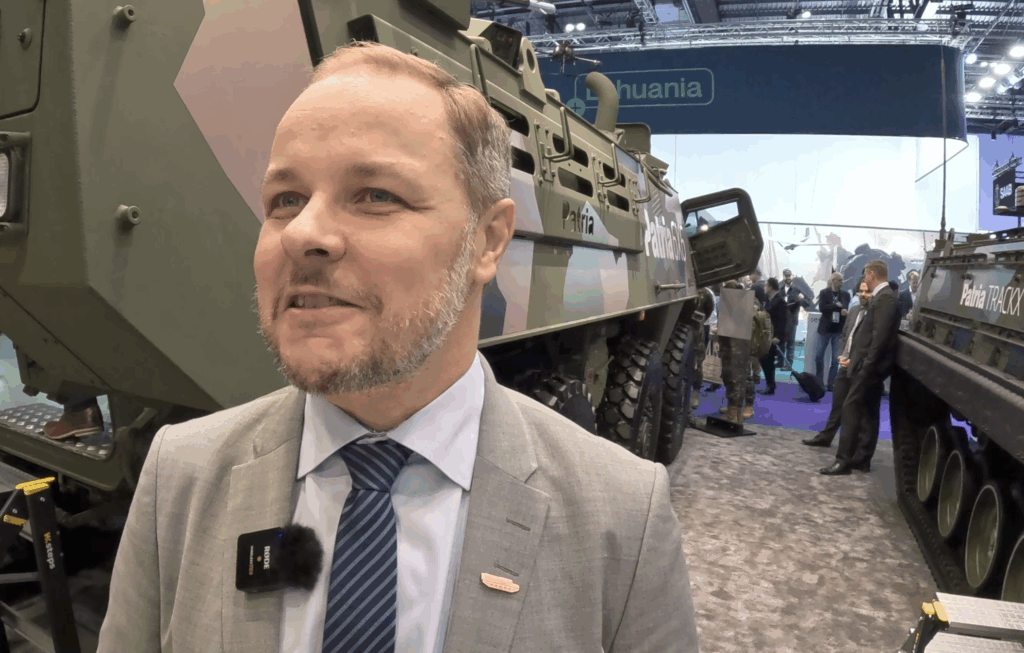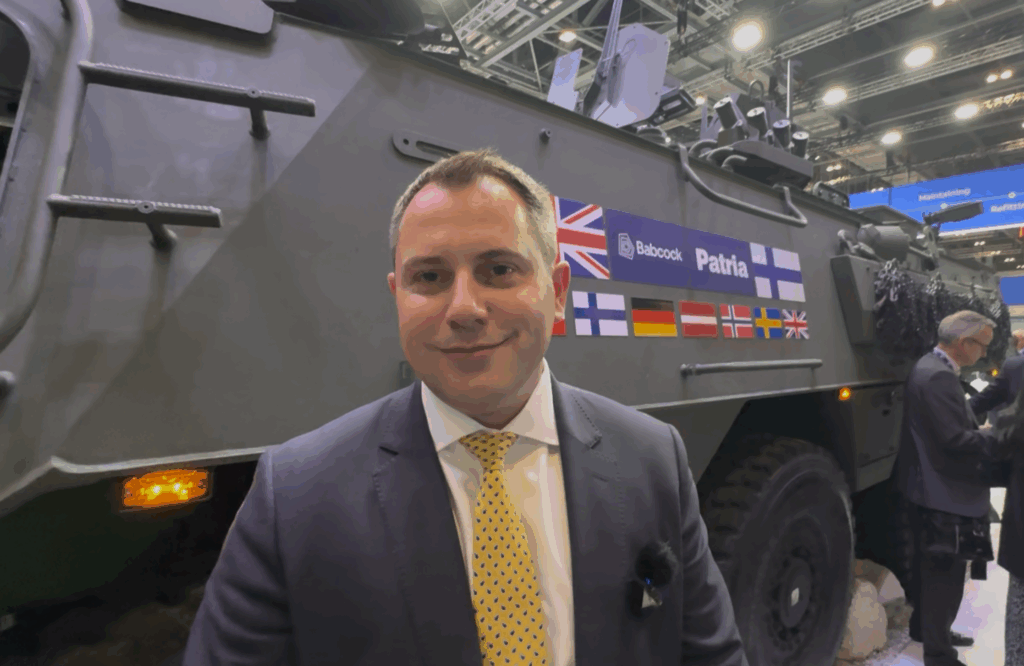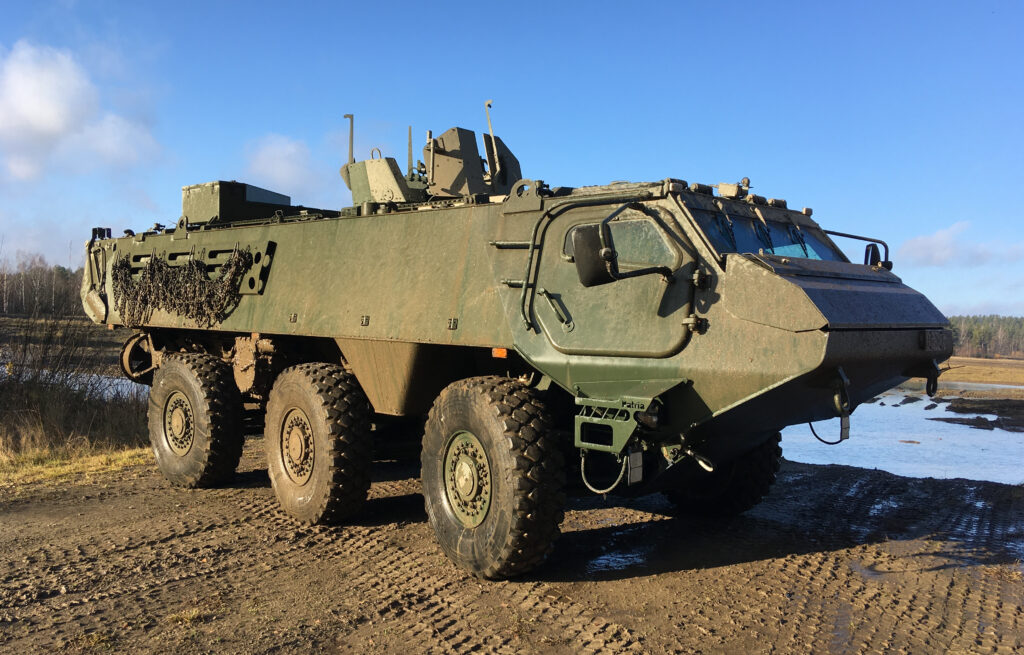Finnish defence firm Patria and UK-based Babcock International Group have sealed a teaming agreement to produce the Patria 6×6 armoured vehicle within the United Kingdom, as part of the multinational Common Armoured Vehicle System (CAVS) programme. Babcock may open more markets for Patria in the Commonwealth countries, like Canada.
The UK Ministry of Defence has officially entered the initiative by signing the crucial Technical Arrangement, marking a material commitment to collaborative procurement and domestic industrial capability. Under the terms of the deal, Patria retains responsibility for the design and development of the 6×6 platform, while Babcock will serve as the build and support partner, overseeing manufacture and lifecycle support in accordance with the UK MOD’s Land Industrial Strategy. This arrangement ensures the UK will host a locally built, NATO-aligned armoured personnel carrier, combining proven design with national defence industrial commitments.
”The British Army’s intent effectively is to look at ground-based air defence for sure requirement to replace the STORMER and VAMTAC vehicles,” said Chris Spicer, the Managing Director at Engineering & Systems Integration at Babcock International Group. “In the context of the land mobility programme, covering both medium and heavy requirements, likely above 1000 vehicles could be needed against that backdrop,” said Spicer. As Norway now joined CAVS too, there is growing pressure for production capabilities with Patria and its partners.
A Proven Platform, Now with UK-Built Capability
According to Babcock’s Spicer, it took a lot of effort in the last two years to get the UK to join the CAVS programme. “What’s really important is a cultural fit between the two organisations,” Chris Spices describes the straight–talking relations between Babcock and Patria.
The Patria 6×6 has been under development since its debut in 2018 and is at the heart of the CAVS programme, industrially led by Patria, initiated by Finland and Latvia in 2020, and already joined by Sweden, Germany, and now the UK and Norway. Nearly 1,000 vehicles have been ordered, with more than 250 delivered to date. The platform is currently operational in several NATO countries, and Denmark has just joined the programme with a sizeable contract. With the Commonwealth market presence of Babcock, the prospect of expanding the CAVS program to Canada is increasingly likely.
“Who knows, but we’d be keen to start here (in the UK) and see where the relationship with Patria develops,” Babcock’s Spicer said.
The 6×6 is known for its modularity, modern protection, and exceptional mobility. Depending on configuration, it serves in roles such as troop carrier (APC), command post (C2), reconnaissance, mortar carrier, ground-based air defence, or medevac. Available armaments span from medium-calibre weapons to the 120 mm NEMO mortar system.
Strategic Benefits of the Fenno-British Partnership
Babcock’s CEO for Land Sector, Tom Newman, underlined the significance of the collaboration at the publication of the collaboration:
“We welcome the UK Ministry of Defence’s decision… to deliver a large fleet of formidable, proven armoured personnel carriers, backed by a comprehensive training and support package.”

Echoing this, Patria’s Jussi Järvinen, EVP of Protected Mobility, added: “Our partnership brings clear benefits: the UK needs a proven ready-to-use vehicle platform… the Patria 6×6… will be locally built and supported to meet British Army requirements.”
Their joint statement emphasises the value of European collaboration and that every new partner strengthens the security of supply across the consortium.
UK Modernisation of Armoured Vehicles
This agreement dovetails with the UK’s broader modernisation of its armoured capabilities. The army is investing in programmes such as Ajax, Boxer, and Challenger 3—spanning across infantry fighting vehicles to main battle tanks—creating thousands of defence-sector jobs and reinforcing local industrial capacity.
The Patria–Babcock move complements these investments by adding a versatile, medium-weight APC option. While Ajax and Boxer cater to high-intensity combat roles, the 6×6 fits the medium protected mobility niche—bridging capability gaps for rapid manoeuvre and force protection. “We’re lucky to have our factory in Plymouth,” Babcock’s Spicer explained. “We are a big employer in the region, and we can flex our resources here in the dockyard to meet demand. We’re very keen to keep doing that while also developing skills as we go.”
In parallel, UK forces are exploring integration between the CAVS platform and the Finnish NEMO 120 mm mortar turret, having previously considered similar integration onto the Boxer chassis.
Reinforcing Momentum Behind the CAVS
Patria and Babcock now position themselves at the centre of the UK’s next-generation armoured mobility strategy. With the CAVS framework firmly established and the Technical Arrangement signed, the path is clear for serial UK production and broader adoption across allied nations. The timing also aligns with Norway joining the CAVS programme and Denmark’s recent CAVS procurement and first deliveries.
“Now, we have almost all JEF countries already in the program, in addition to Germany,“ Patria’s Jussi Järvinen said at DSEI2025. Listing all CAVS participants: Finland, Latvia, Sweden, Germany, Denmark, Norway, and the United Kingdom.
Does Babcock see potential for collaboration with other products, like the newly launched Patria TRACKX from project FAMOUS?
“So absolutely,” Babcock’s Spicer replied. “The FAMOUS vehicle has caused quite a stir. People think that’s a very good platform. I’ve been lucky enough to see that in the Arctic Circle being demonstrated. If anybody is interested, whether it’s in the UK or actually where we have other organisations, like in Canada, for example, we’d be really pleased to work with PATRIA.”
Read More:
- EDR News: Patria delivered first 6×6 vehicles to Denmark within the CAVS programme
- Shephard: British Army considers purchasing the NEMO 120mm mortar turret for the Patria 6×6
- Wikipedia: General Dynamics Ajax
- BattleSpace: British Army Gives Programme Update At IAV By Julian Nettlefold
- Defense Industry Europe: Patria and Babcock agree partnership on 6×6 armoured vehicle for the British Army
- Patria: Patria and Babcock agree partnership on 6×6 vehicle for the UK armed forces
- Babcock: Babcock and Patria agree partnership on 6×6 vehicle for the UK Armed Forces



